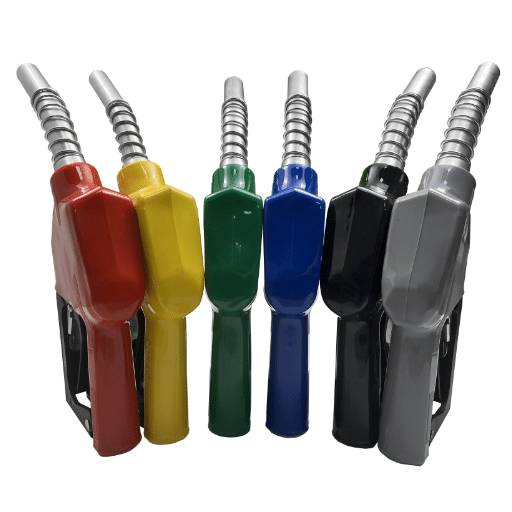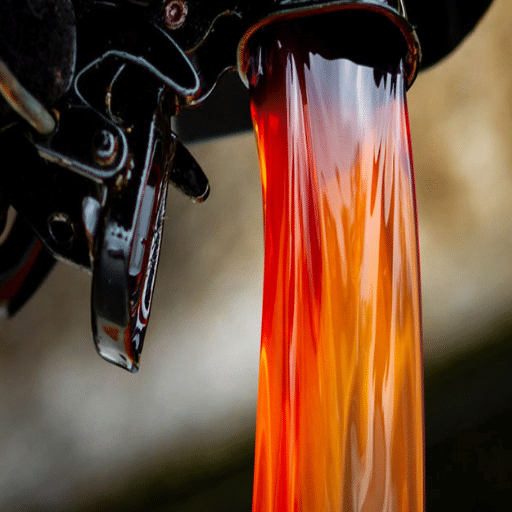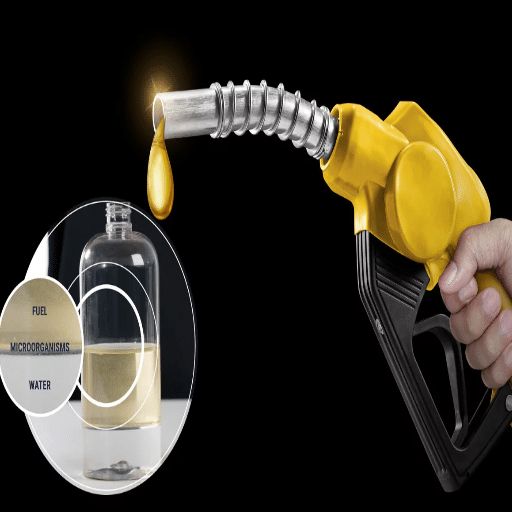It is often believed that water contamination in the gas tank is a small problem, but in fact, it can lead to serious performance issues and even cause the engine of the car to get damaged in the long run if nothing is done about it. Knowing the symptoms of water in the fuel tank is very important for the vehicle to run properly and safely. The article here will walk you through the main symptoms to look for, like rough idling, engine hard start, and less fuel efficiency, and at the same time will give you step-by-step guidance on how to deal with and fix the problem. In the case that you are an experienced driver or a person who is not very familiar with vehicle maintenance, reading this blog post will give you enough knowledge to spot and clean up water from your gas tank before it results in expensive repairs.
Understanding Water in Your Gas Tank
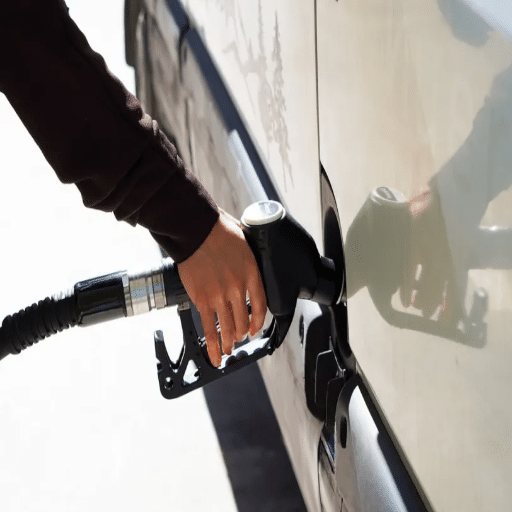
Water in the gas tank can lead to serious problems with the car’s efficiency and functioning. The most common way the water gets in is through condensation, a leaky fuel cap, or dirty fuel. The water content in the tank obstructs the combustion process, as these two liquids (water and gasoline) are not compatible. Consequently, it can lead to a situation where the car vibrates while idling, there is a misfire in the engine, and there is a drop in fuel efficiency. Eventually, internal parts caused by the water in the tank can corrode, and the entire fuel system will need replacement.
An appropriate response to the issue is to use a fuel additive that specifically removes water, which is the most effective first step to take. The use of these additives results in the breakdown of water into smaller particles that are safe for the engine to pass through. If the water has been in there for a long time, then removing the tank will be the only way to ensure complete water extraction. The issue can be prevented in the future by the regular cleaning of the fuel system and by using good-quality fuel.
What Causes Water to Enter Your Gas Tank?
Water can make its way into the gas tank by different methods, with the most common being condensation, contaminated fuel, and environmental exposure. When temperature changes are dramatic, condensation is the usual thing that happens, and moisture is formed on the inner walls of the tank. Contaminated fuel is another usual reason, and it is water that accidentally gets mixed with fuel during transportation or storage at fuel stations. Moreover, environmental factors such as a bad gas cap can let rainwater or humidity get into the tank. Having a well-sealed gas cap and buying fuel from trustworthy stations are the main preventive actions.
Common Sources of Water Contamination
There are several reasons for water to get into the fuel systems, and knowing them will help to prevent the problem. The main reason is the condensation caused by temperature changes, which leads to moisture forming on the inside of the fuel tank. Another major source of contaminated fuel is the careless manner in which it is handled during transportation or poor storage conditions at the gas stations. Moreover, environmental factors such as rainwater or water vapor entering through a broken or weakly sealed gas cap can also result in water getting into the tank. To lessen these dangers, it is necessary to keep the gas cap locked and unbroken, buy fuel from reliable sources that offer quality products only, and introduce fuel additives that aim at moisture aggregates. Moreover, regular vehicle upkeep and checking of the fuel system can minimize the possibility of water getting mixed with the fuel and the problems that come along with it.
The Presence of Water: Signs to Watch For
Water in the gas tank can cause several problems, which sometimes can even lead to more complications if not caught early. The most common symptoms include the engine being hard to start, spitting, or falling off, especially at low speeds. The water that has penetrated the fuel system usually causes a significant drop in power and fuel consumption as it hampers the process of combustion. In addition, there might be a delay in getting full power when you step on the gas, or you may notice the engine producing strange sounds like knocking or pinging. The presence of white smoke or a lot of exhaust coming out of the tailpipe is another strong indication of water in the fuel. If you are able to do a visual check-up of the fuel tank, you might see that the water has settled at the bottom of the tank, causing a clear line of separation as water is denser than gasoline. It is very important to be aware of these signs since they will help you to quickly diagnose water contamination and take the necessary corrective action on time.
Symptoms of Water Contamination
| Symptom | Description |
|---|---|
| Engine Performance Problems | In case of loss of power, the engine may stall or have difficulty starting. |
| Noises That Are Not Normal | While the engine is running, you might hear knocking, pinging, or sputtering sounds. |
| Smoky Exhaust | The exhaust may produce white smoke or other bizarre emissions. |
| Fuel Separation That Can Be Seen | There is a clear distinction in the fuel tank, where the water is settling under the fuel. |
It is very important to quickly recognize these signs or symptoms in order to avoid damaging the engine further and to have the engine working properly.
Identifying Symptoms of Water in Your Fuel
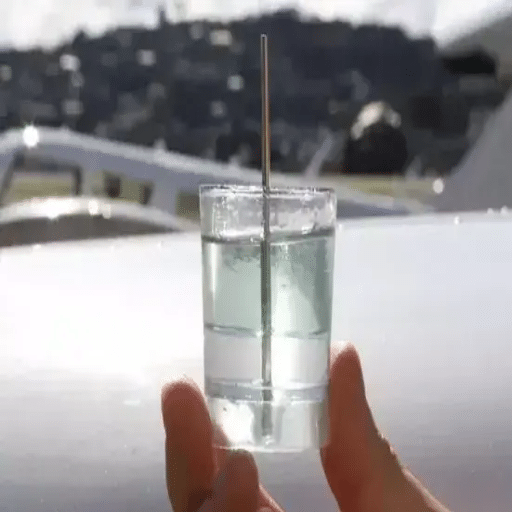
Water in the fuel systems can cause severe engine problems if the matter is left unattended for a long period. A brief guideline from the best expert sources is below:
- Drainage of the Fuel Tank: In the case of water contamination being confirmed, the very first thing to be done is to drain the fuel tank completely. This will take away the larger part of the water and the contaminated fuel from the system.
- Fuel Filter Replacement: The water in the fuel might cause damage to the fuel filter, or it may clog it. By replacing it, the engine will not be exposed to the residual contaminants’ circulation.
- Fuel Additive Usage: The specialized fuel additives or water dispersants help in the removal of the small quantities of water remaining in the fuel system. The water molecules become attached to these products, and during the engine operation, they are burned off harmlessly.
- Fuel Lines Inspection and Cleaning: Any water left in the fuel lines could still be a source of problems. The line cleaning ensures that the contamination is completely removed.
- Refueling With Top-Notch Fuel: After the contamination problem has been addressed, refill the tank with clean, high-quality fuel to bring the engine performance back to optimum. Do not get fuel from unreliable sources to lessen the risk of contamination in the future.
If you systematically follow these steps, you will not only minimize damage but also keep the engine efficient and prevent contamination from recurring. It is always best to detect and maintain the problem early to avoid the expenses involved in repairs.
How Water in the Gas Tank Affects Vehicle Performance
The presence of water in the gas tank can adversely affect the performance of a vehicle in several ways. To begin with, water does not burn like gasoline, thereby disrupting the fuel-to-air mixture in the engine. Consequently, engine performance, idling, or even misfires could be rough due to the presence of water. Also, the fuel system may rust and corrode with the water, leading to internal components’ (fuel injectors, fuel lines, and the fuel pump) rapid wear and tear and the eventual shutdown of the system.
Water freezing in the fuel line in colder climate areas is another major problem, which can lead to fuel starvation of the engine and, consequently, hard or impossible vehicle starting in extreme cases. Also, when water is there, it may result in gasoline being diluted, so that the engine would have to work harder, thus reducing its efficiency and power output in general.
Water in the fuel system will affect the performance of modern vehicles fitted with electronic fuel injection systems, particularly as even trace amounts of water could lead to their malfunctioning. It thus becomes very important to deal with the problem of water contamination immediately if one wishes to enjoy the benefits of high-performance engines, avoid costly repairs, and secure a long-lasting vehicle. Besides, regular maintenance and quality fuel would be the most effective measures to take to keep water out of one’s fuel system.
Diagnosing Water in a Gas Tank: Key Indicators
Determining the presence of water in a gas tank is very important in order to prevent the fuel system from getting damaged even more. The following are the usual signs:
Difficulty Prompting the Engine
Fuel with water can cause improper combustion, which will result in difficulty starting the engine or making it stall shortly after the ignition. The reason is that water acts as a barrier to the fuel getting into the combustion chamber.
Strange Engine Functioning
A petrol supply that is mixed with water can cause misfires, sputtering, or a noticeable decrease in power during acceleration. The reason for these symptoms is that water is non-combustible, and the engine is thus prevented from operating efficiently.
Check Engine Light On
Contemporary cars frequently spot performance irregularities due to water contamination and thus turn on the check engine light. Diagnostic trouble codes (DTCs) ascribed to the fuel supply may give more precise information.
Reduced Fuel Efficiency
Water presence affects the air-fuel mixture, causing incomplete combustion and fuel economy reduction. It may not be very apparent initially, but it will be very evident as the contamination increases.
Rust or Damage in Fuel System Parts
Continued access of water into the gas tank may result in rust or corrosion of the fuel pump, injectors, or tank as the destroyer. Inspections that reveal such decay are a trustworthy signal of water contamination.
⚠ Important: If any one of the listed signs is seen, immediate action should be taken to find and drain the water from the gas tank to avoid expensive repairs or further operational problems.
Effects of Water in Gasoline
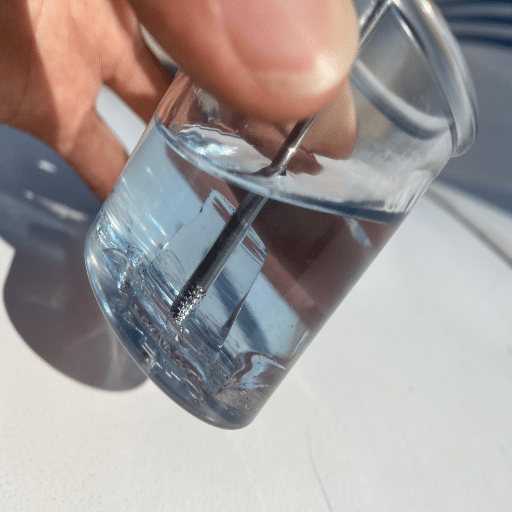
The presence of water in gasoline has a serious negative impact on the performance and functioning of the engine. It interferes with the combustion process, which results in the fuel being burnt insufficiently, the engine being fired out of its cycle intermittently, and possibly even the engine turning off. Water being non-combustible means that it takes away part of the energy output in case it is mixed with the fuel, resulting in a reduction in the power and acceleration. Moreover, water is able to cause corrosion to metal parts in the fuel system; thus, the fuel pump, injectors, and tank may suffer from wear and tear. If the problems arising from water in the fuel are not dealt with, costly repairs and loss of vehicle reliability will be the consequences.
Impact on Fuel System and Engine
The contamination of fuel systems with water can be lessened through various measures that are based on the best practices in the industry and the most recommended solutions:
- Fuel Additives: Water-emulsifying and removal fuel additives are made specifically from high-quality fuel additives. The smaller droplets formed by these additives are water, which eventually allows the water to pass through the system without causing any damage.
- Maintenance and Inspection: Periodic inspections of the fuel system, tank, lines, and filters can help detect and remove water contamination at an early stage. Changing fuel filters at intervals advised is very important, as these filters can hold moisture and other impurities.
- Preventive Measures: One of the best preventive strategies for water contamination is the prevention of condensation. Environments regulated for the storage of vehicles or containers for fuel, or making sure that the fuel tank is always full, lessen the chance of water getting in.
- Water separators should be drained: A lot of new cars have water separators that are made to catch and take water out of the fuel system. Time to time draining of these separators, according to the instructions from the manufacturer, ensures that they work well.
By putting these methods into practice, the negative impacts of water contamination that lead to corrosion, inefficiency, and damage to the system can be controlled to a great extent, therefore, maintaining the reliability of both the fuel system and engine in the long run.
Consequences of Ignoring Water Contamination
Inadequate control of water contamination in the fuel systems can lead to major consequences. The initial impact is that water acts as a catalyst for the growth of bacteria and fungi in the fuel, which in turn leads to the creation of sludge and biofilms. These products of the decomposition process can hinder the smooth flow of fuel, block filters, and eventually cause the engine to fail. Moreover, water contributes to the gradual destruction of metal parts in the fuel system, such as fuel tanks and injectors, making them less strong and thus more expensive to replace. Also, water has the effect of reducing the flammable nature of the fuel, hence leading to partial burning, loss of engine power, and more gases being produced that are harmful to the environment. Comprehensive maintenance of the fuel systems is a good way to prevent water problems, but if it is neglected, the situation gets worse and thus jeopardizes not only the performance aspect but also the safety and durability of the systems.
Long-Term Damage from Water in Your Fuel
Water contamination in fuel systems is a very serious problem that, if not dealt with, can cause many long-term damages. Gradually, water will enable the growth of micro-organisms, which are often called “fuel bugs” and consequently lead to the production of sludge and biofilm. This build-up will eventually block filters, lines, and injectors, causing interruption in the flow of fuel and thus making the engine run inefficiently. On top of that, water will also cause rust and oxidation to occur in metallic parts, which in turn will reduce the lifespan of those parts, like tanks and pumps, as they get weaker. Corrosion will then lead to more dust formation, which will hurt critical moving parts, thus causing them to wear out faster.
If fuel stays in contact with water for a long time, its quality will decrease because the lubricity and cetane levels are lowered, which will result in unburnt fuel and increased carbon deposits in the engine. The latter not only makes the engine less efficient but also causes more exhaust emissions, and the risk of catastrophic component failures increases. Water contamination should be dealt with in a proactive way through installing proper filtration systems, frequent draining of water separators, and using fuel additives that are intended to disperse water in order to mitigate the severe effects and guarantee long-term reliability.
Removing Water from Your Fuel Tank
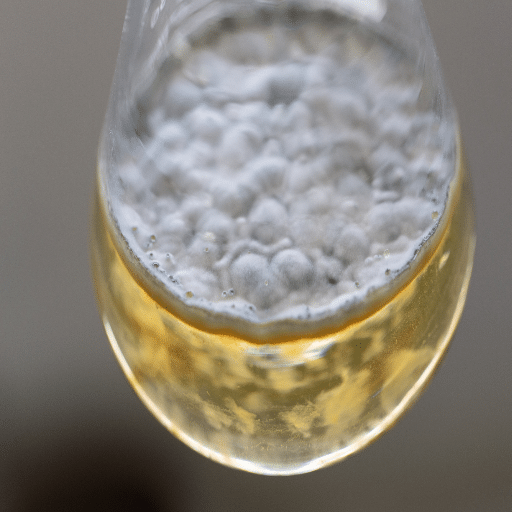
- Drain the Fuel Tank – One way which guarantee the complete removal of water is by draining the tank completely. This method not only secures but also incredibly prevents any further contamination or damage. After the draining process, make it a point to refill the tank with fresh and clean fuel.
- Use a Fuel Additive – The use of water-dispersing fuel additives can be really beneficial since it can help to a certain extent by dispersing small droplets of water in the tank, thus allowing it to mix with fuel and be safely disposed of through burning during engine operation. The additives must always come from the manufacturer of your vehicle or equipment.
- Inspect and Maintain Fuel Filters – The maintenance and cleaning of filters should be done regularly to avoid any blockage that might prevent them from effectively trapping moisture and debris. The regular maintenance makes it possible to control contamination in the future.
If you take the necessary precautions, it will be possible to not only protect your engine’s performance and longevity but also reduce the risk of serious issues from water in the fuel system.
Methods to Remove Water in a Gas Tank
- Use a Fuel Additive – Specialized fuel additives, like water removers or fuel stabilizers with isopropanol, can facilitate the process of water dissolving and consequently removing it from the gas tank. This procedure allows the water to mix with the fuel so it can be burnt off during combustion. Make sure to check the compatibility with your fuel type and, at the same time, follow the manufacturer’s instructions for safe and efficient use.
- Drain the Fuel Tank – In case of heavy water contamination, manually draining the gas tank is the most effective method. Particularly, this method entails siphoning the fuel out or, where a drain plug is available, the draining of both fuel and water mixture through the drain plug. Refer to your vehicle’s service manual for guidance on this and safety measures, such as no open flames, ventilation, etc., during this operation.
- Use an Electric Fuel Pump for Removal – When manual draining is not an option, the contamination of fuel can be removed by using the vehicle’s electric fuel pump to flush out. This practice involves detaching the fuel line at the engine and gathering the mixed fuel and water in a container until the tank is dry.
- Seek Professional Assistance – If the contamination level is high or you don’t have the right tools and are not skilled, it is better to have the vehicle checked by a certified mechanic. Experts will be able to conduct advanced methods of cleaning, such as tank cleaning and system inspections, thus ensuring that all water is out without causing any damage.
The selection of any method with its pros and cons would depend on the contamination level and your technical skills. Timely application of water removal methods can save the fuel system from damage, keep the engine reliable, and increase the life of your vehicle or equipment.
DIY Solutions for Water in Your Gas Tank
The problem of water contamination in the gas tank can be treated quite successfully with a mixture of simple tools and easy-to-get products. Here are three typical DIY ways to perform it:
Use of Fuel Additives
Some fuel additives, like isopropanol-based gas treatments or dry gas products, are water-absorbing, and at the same time, the water can be burned together with the fuel. Products like HEET or STP Water Remover can be poured directly into your tank. Just remember to follow the product-specific guidelines and use the right amount according to your tank size so that you do not overdose.
Siphoning Water Out
For a large quantity of water, siphoning would be a good option. A siphon pump can be used to remove the fuel mixture that has been contaminated. Be sure to dispose of the siphoned fuel properly in accordance with local environmental regulations. Then, replenish with new fuel and add a suitable fuel additive to eliminate any remaining moisture.
Draining the Tank
In case of very severe contamination or widespread, draining the fuel tank can be a more effective option. This needs the removal of all the fuel, either through disconnecting the fuel lines or direct access to the tank. After draining, clean the tank very well, let it dry, and refill it with fresh, clean gasoline.
ℹ Note: With all methods, it is very important to watch out for remaining symptoms like sputtering or starting difficulty of the engine, which might mean water is still there. If the problem does not go away, it is better to take the car to a recognized auto mechanic who can do a more thorough examination and may even repair/replace some fuel system components that are damaged.
When to Seek Professional Help to Remove Water
In case the conventional techniques do not work, or if the water contamination signs like engine sputtering, hesitating, or rough idling are still there, one should get professional help. The problem of water contamination in the fuel tank can sometimes be very serious and may need special methods to tackle it, such as complete fuel system drain, fuel line flushing, and replacement of parts that were damaged, including fuel filters or injectors. If the car has been affected by flooding to a great extent, then it is very important to have a professional service that will evaluate and manage the situation to avoid the problem becoming worse for a long time. The certified mechanics possess the skill and tools necessary to detect and fix water contamination issues correctly, thereby making the vehicle operate safely and efficiently.
Preventing Water Contamination in Your Gas Tank
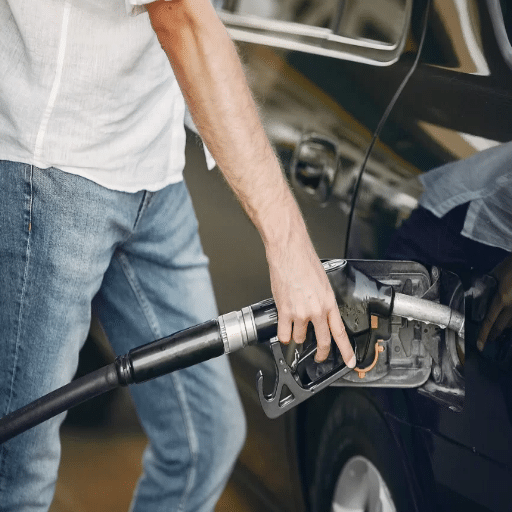
To keep your gas tank from getting contaminated with water, you should always refuel at the gas stations that are reputable and have good storage tank maintenance. Moisture can seep into the tank if proper sealing or damage exists on your gas cap. It is also advisable not to drive with a low fuel level because condensation can happen in the tank and mix with the fuel. Use the additives for the fuel system that the manufacturer suggests, and one that is specifically designed to remove water, if the vehicle’s manufacturer recommends them. Keeping your vehicle indoors or in a dry place will also help reduce the chances of water intrusion.
Best Practices to Keep Water Out of Your Fuel
To water prevention very effectively in your fuel system, it’s best to consider the following willful and detailed measures:
Use High-Quality Fuel and Trustworthy Stations
Never and ever fill your tank at any random place, but always do it at stations that have good fuel quality as their standard, and do regular inspections on their storage tanks. One of the main reasons why fuel gets contaminated is the unreliable fueling locations and the contaminated storage tanks there.
Keep Your Tank Full
The practice of maintaining a full fuel tank reduces to a minimum the portion of air where condensation can take place. This is an especially important procedure in places with varying temperatures because these changes create humidity, which goes into and forms inside the tank.
Ensure a Secure Gas Cap
Check your gas cap regularly to make sure it is securely closed and not damaged. A weakened gas cap is a reason for the fuel system getting rain or moisture, or water entering the system in a high-humidity environment.
Drain Water Separators Regularly (For Diesel Engines)
Diesel engine vehicles usually have a fuel-water separator. Drain it as per the manufacturer’s instructions to get rid of the water being pooled, which might later mix with the fuel and eventually cause complications.
Use Fuel Additives When Necessary
Look for fuel additives, especially for the purpose of preventing water contamination. These additives break the water particles into smaller pieces so that they will not settle at the bottom of the fuel tank. The settling of water at the bottom would lead to corrosion or performance problems.
Refuel Before Storing Your Vehicle
In case you are going to keep your vehicle in storage for a long time, filling the fuel tank is a must to lessen the chances of condensation occurring. In addition, think about the use of a fuel stabilizer to protect the fuel system and prevent its degradation.
✓ Key Takeaway: By actively putting into practice these habits, the likelihood of water entering your fuel is reduced, thus keeping the engine working efficiently, preventing the wearing of the fuel system parts, and assuring the car’s performance reliability.
Choosing the Right Fuel and Storage Techniques
In terms of the right fuel and storage methods, I never fail to use the fuel with the recommended octane rating for my car to keep its performance at the level of the best. For storage purposes, I fill up the tank all the way and put in a top-tier fuel stabilizer to avoid the oxidation of fuel and the formation of gum. Not only does this method safeguard the fuel system, but it also guarantees that the engine will have a smooth start after the storage time is over.
Regular Maintenance Tips for Your Fuel System
-
- Use High-Quality Fuel: Always choose to refuel at places with a good reputation; this way, you will be sure that the fuel you are using is not contaminated. When you use low-quality fuel, it can damage your system with impurities that could possibly get stuck and cause the engine to work less powerfully than usual.
- Fuel Injector Cleaning: Clean up the fuel injectors using a fuel injector cleaning solution once in a while to get rid of carbon buildups and dirt. This is the process that ultimately gives you the best fuel atomization, and the efficiency of the engine is improved.
- Inspect Fuel Lines and Filters: Regular inspections for cracks in the fuel line and leaks should be done, along with replacing the fuel filter according to the manufacturer’s advice. The filter that is clogged restricts the flow of fuel and creates an unnecessary load on the pump.
- Watch the Condition of the Fuel Pump: Noise coming from the fuel pump might suggest it is getting old, and it should be attended to. If you allow these problems to develop, you might end up with huge repair costs.
- Proper Tank Levels: Do not run out of fuel too often. This practice may allow the pump to suck up dirt, and when that happens, you might face the problem of the blockage.
Your fuel system components will last longer, and your engine will perform reliably if you commit to these maintenance practices.
Reference Sources
Frequently Asked Questions (FAQs)
What are the common symptoms of water in the gas tank?
The common symptoms of water in the gas tank are engine misfires, rough idling, hesitation under load, sputtering, stalling, difficulty starting, and loss of power. Corrosion on fuel components, poor fuel combustion, a watery smell, or any of these tank symptoms are caused by the mere presence of water in their midst; after all, water doesn’t burn, and that will disrupt the engine and fuel system.
How can water enter the gas tank, and what are the causes of the water entering the tank?
A gas tank can be filled with water as a result of several factors, such as condensation, pump contamination, driving through flooded areas, or leaking seals that allow rainwater or wash water into the tank. Water is heavier than gasoline; hence, it settles at the bottom, so water entering the fuel system usually comes from the way into your gas tank or from water in your car that is caused by poor sealing or bad storage.
What happens when you have water in your gas? Will it harm my car’s fuel system if it is a small amount?
A small amount of water, for instance, half an ounce mixed with fuel, may only cause minor water-related issues such as rough running or brief hesitation, still not enough to immediately destroy the engine. However, even minor water in your fuel tank can cause corrosion, injector damage, or long-term problems in the engine and fuel system if not detected and remedied. Fresh fuel contaminated with water is a sure sign that water is in your fuel tank, which needs to be dealt with.
How can I detect water in your fuel? What are the signs of water in gas?
Detecting water can mean noticing the tank symptoms like poor combustion, white smoke, or sputtering. Water droplets can be seen when draining a fuel filter or using a fuel-sampling syringe to sample the gas. A lot of mechanics look for a clear water layer below gasoline when a sample is allowed to settle, which indicates the presence of water in the fuel.
What should I do to remove water from the gas tank if the gas tank gets water in it?
Draining and cleaning the fuel tank are the main methods for removing the water, along with replacing the fuel filter and refilling with reputable gas and a little bit of fresh fuel. In some cases, fuel additives that emulsify and help remove water can be of help, but in the case of larger amounts of water, tank removal and professional cleaning will be recommended in order to avoid damage. It’s best to remove the water quickly to prevent long-term harm to the injectors and the fuel pump.
Is diesel fuel able to cope with water in the tank differently from gasoline if there is a significant amount of water?
Diesel fuel is more likely to have microbial growth when it is mixed with water, and thus, water in diesel fuel can damage the filters and injectors very quickly. Water in the fuel will also separate and settle, which creates even more severe tank symptoms and would often require complete tank cleaning and replacement of filters. Diesel systems are particularly sensitive to water because water promotes corrosion and contamination in the car’s fuel lines and tank.
How can I prevent water from getting into my gas tank or water from getting into your gas at all?
To avoid water, always buy from reputable gas stations, fill up the tank to the brim to prevent condensation, inspect and take care of the seals and venting systems, refrain from driving through deep water at car washes or floods, and if you are going to park a vehicle for a long time, make sure it has a full tank. Regular maintenance and early detection of water by checking filters helps to avoid the situation where water is in your car’s tank, and the engine and fuel system are compromised.
Are there any quick fixes to deal with the water if I think there is water in my car’s gas tank right now?
If you suspect your car’s gas has water in it, stop driving immediately to prevent any further damage. Replace the fuel filter and think about adding a water-removing fuel additive for small amounts of water. If it is more than trivial, arrange for the tank to be professionally drained and cleaned to ensure the water and any contaminated fuel are completely removed. Quick action minimizes the risk of water mixing with fuel and causing permanent damage.

